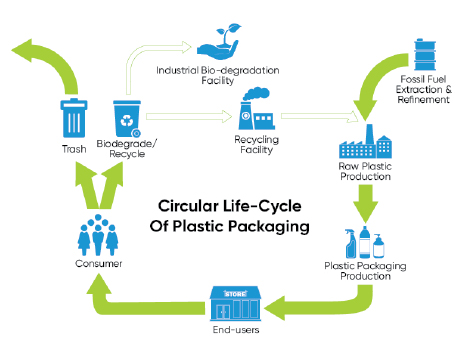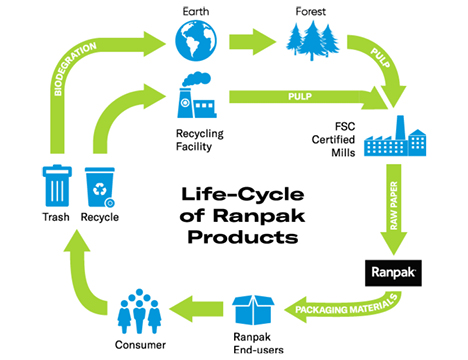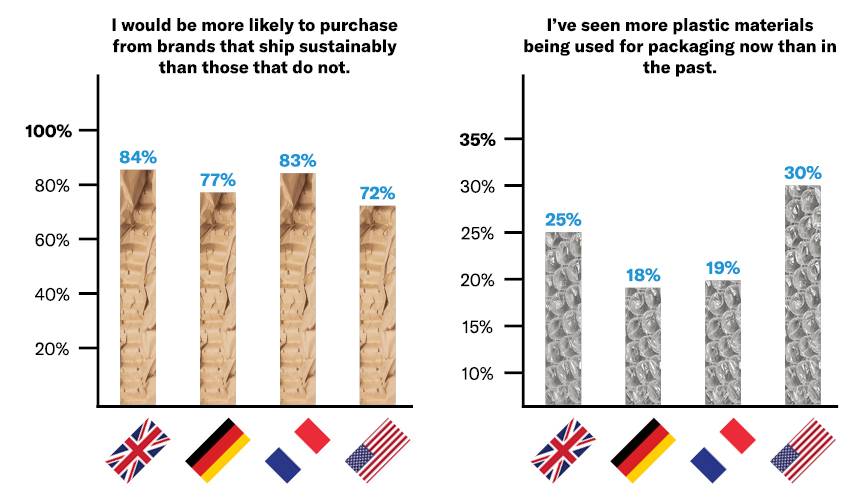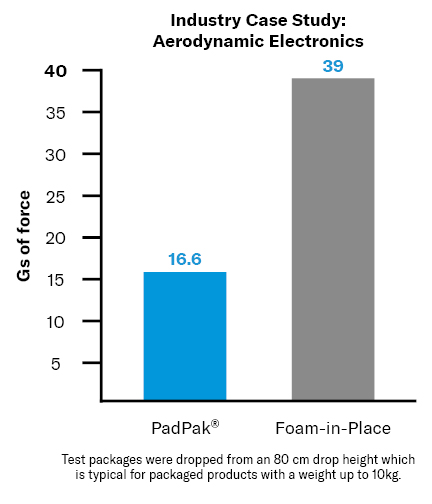




There are many reasons why making the change to more sustainable packaging is important, but six stand out as evidence that sustainable ways of doing business will be critical for our future and a potential boost for the economy as well. These include environmental, consumer, and government factors supplying enough momentum to create a megatrend.
1 – Our planet requires sustainable packaging solutions
Globally, an estimated 42% of all plastics are being used in packaging, the majority of which are only intended for a single use. The problems created by plastic pollution in an ecosystem are long-lasting.
90% of plastic never re-enters the product lifecycle and is instead incinerated, put into a landfill, or released into the natural environment.
It can take anywhere from 20 to 400 years or more for plastic to break down.
Once it does, the resulting fragments, or microplastics, typically linger in everything from our water to our food and soil.
Using sustainable materials for packaging can break this negative cycle.
2 – In a growing number of places, reducing plastic packaging is the law
In 2021, Australia announced its National Plastics Plan, a plan to ban single use plastics by 2025. Apart from Australia, a growing number of countries and cities around the world are also taking action to ban the use of plastic for single use applications.
In the EU, the “Directive on Single Use Plastics” of 2019 aims to combat the 10 most commonly found single-use plastic items on European beaches which represent 70% of all marine litter in the EU.
In the US, states like California, Hawaii, and New York have begun to legislate against items like plastic bags, forks, and food containers.
In Asia, countries like Indonesia and Thailand have spearheaded calls to adopt measures against single use plastics.
Rather than wait for legislative pressure, Morgan Stanley research reports that the number of companies with a visible plastic strategy in the US more than doubled year-over-year from 2018 to 2019 alone. When anticipating megatrends, companies have reasons beyond profit to make changes. However, in the case of sustainable packaging, business benefits can be a major factor.
3 – Sustainable packaging materials are what consumers like to see
Ranpak and Harris Research revealed that e-commerce customers across the US, UK, France, and Germany all prefer to do business with companies that use sustainable packaging. In fact, across all these countries, over 70% of consumers shared this preference, with >80% saying the same in the UK and France. Consumers felt even more strongly that they would prefer to see paper packaging instead of plastic protecting their online purchases.
Not only do consumers prefer seeing paper in a box, a 2013 study found paper was the most pleasant to the touch out of a field of 12 materials, ranking five spots higher than plastic and even beating out velvet for the top spot.
4 – Sustainable packaging protects goods effectively
The persistent myth that plastic is superior to other types of protection doesn’t hold up to scrutiny. Sustainable materials have continued to be used as packaging materials for thousands of years—long before the wide commercial use of plastic.
While plastics were first invented in 1869, it was not until the advent of World War II that they began to become ubiquitous as they increased in production during this period by 300%.
Paper is possibly the oldest flexible packaging in the world, and along with materials like metal and glass, belong to a category of packaging materials that predate industrialization.
Sustainable materials can be used for any application within a box, even critical applications including cold chain.
In many applications, paper outperforms the protection offered by plastic, sometimes up to 58%.
5 – E-commerce continues to grow across the globe
Ranpak’s e-commerce study found that over half of consumers planned to buy more online from 2020 to 2021 within three out of four represented countries. Within these markets, growth in e-commerce is also supported by the increasing popularity of grocery, meal, and food delivery services.
eMarketer predicts that in the US, e-commerce penetration will more than double from 2019 to 2025, growing from 11% to 23.6%.
Globally, Mexico tops the list of 5 fastest-growing e-commerce markets with a 35% growth rate. Runners up are, in order, India, the Philippines, China, and Malaysia.
In 2019, the total value of global e-commerce was $9.09 trillion in US dollars.
Sustainable packaging options are needed to support the increase in global e-commerce activity.
6 – Companies should improve the sustainability of their business models
Environmental, Sustainability, and Governance strategies, commonly referred to as ESG strategies, are a critical part of many companies’ development, as consumers and investors become increasingly ecologically conscious. By improving the resource efficiency of their businesses, companies can improve their scores, and potentially gain business benefits including boosts to reputation, customer and employee loyalty, and access to capital.
ESG investments are increasingly popular. In the US alone, around a quarter of assets under management are ESG-rated investments—a total of about $12 trillion.
The circular economy is anticipated to create $4.5 trillion in US dollars by 2030.
Companies that improve their ESG performance can have an easier time attracting and retaining talent.
Based on global factors including the need for positive environmental action, massive growth in e-commerce business that requires sustainable packaging to support it, and the economic opportunities paired with low effort required to make the switch, it’s safe to say that sustainable packaging adoption will continue to be a megatrend in the near future.







